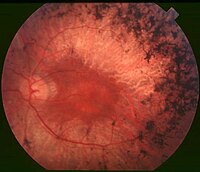
Photo from wikipedia
Extracellular vesicles (EVs) are small membrane vesicles that can be secreted by most cells. EVs can be released into the extracellular environment through exocytosis, transporting endogenous cargo (proteins, lipids, RNAs,… Click to show full abstract
Extracellular vesicles (EVs) are small membrane vesicles that can be secreted by most cells. EVs can be released into the extracellular environment through exocytosis, transporting endogenous cargo (proteins, lipids, RNAs, etc.) to target cells and thereby triggering the release of these biomolecules and participating in various physiological and pathological processes. Among them, EVs derived from bone marrow mesenchymal stem cells (BMSC-EVs) have similar therapeutic effects to BMSCs, including repairing damaged tissues, inhibiting macrophage polarization and promoting angiogenesis. In addition, BMSC-EVs, as efficient and feasible natural nanocarriers for drug delivery, have the advantages of low immunogenicity, no ethical controversy, good stability and easy storage, thus providing a promising therapeutic strategy for many diseases. In particular, BMSC-EVs show great potential in the treatment of bone metabolic diseases. This article reviews the mechanism of BMSC-EVs in bone formation and bone resorption, which provides new insights for future research on therapeutic strategies for bone metabolic diseases.
Journal Title: Pharmaceutics
Year Published: 2022
Link to full text (if available)
Share on Social Media: Sign Up to like & get
recommendations!